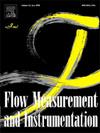液压快接联轴器流动与压降的实验与数值研究
IF 2.7
3区 工程技术
Q2 ENGINEERING, MECHANICAL
引用次数: 0
摘要
快速连接联轴器是液压系统的重要组成部分,因为它们提供了有效和方便的流体管道连接。然而,传统的ISO 16028 dn6.3平面阀设计通常会由于湍流、流动分离和突然的几何转变而导致显著的能量损失。本研究结合实验和数值方法研究了这些联轴器中的压降,确定了关键的能量损失区域:插座后部、阀-插座连接处和插头后部。使用离心泵、磁力流量传感器和压力表进行的实验测量与ANSYS Fluent中使用k-ω (SST)湍流模型进行的数值模拟进行了验证。优化后的联轴器具有更平稳的过渡、更小的收缩和创新的双槽阀配置,流量系数提高了2.22倍(Kv = 1.46 vs. 0.68),在Re = 28,797时,压降从1.120 bar降至0.244 bar。此外,峰值流速降低了51%(从16.73 m/s降至8.21 m/s),有效消除了空化风险。这些改进符合ISO 16028标准,同时显著提高液压效率。双向流动分析显示,在套管到桥塞的方向上,压力损失略高,强调了定向优化的必要性。该设计降低了操作成本,提高了可靠性,并通过节能减少了对环境的影响,使其成为高压系统和建筑设备的理想选择。该研究展示了一种可持续和实用的解决方案,为快速连接耦合设计的未来发展铺平了道路。本文章由计算机程序翻译,如有差异,请以英文原文为准。
Experimental and numerical investigation of flow and pressure drop in hydraulic quick connect couplings
Quick-connect couplings are essential components of hydraulic systems because they offer effective and convenient fluid-line connections. However, conventional ISO 16028 DN 6.3 flat-face valve designs often incur significant energy losses owing to turbulence, flow separation, and abrupt geometric transitions. This study combines experimental and numerical methods to investigate the pressure drops in these couplings, identifying critical energy-loss regions: the socket rear, valve-to-socket junction, and plug rear. Experimental measurements using a centrifugal pump, magnetic flow sensors, and pressure gauges were validated against numerical simulations performed in ANSYS Fluent using the k-ω (SST) turbulence model. The optimized coupling features smoother transitions, reduced contractions, and an innovative two-slot valve configuration, achieving a 2.22 × improvement in the flow coefficient (Kv = 1.46 vs. 0.68) and a pressure drop reduction from 1.120 bar to 0.244 bar at Re = 28,797. Additionally, peak flow velocity decreased by 51 % (from 16.73 m/s to 8.21 m/s), effectively eliminating cavitation risks. These enhancements comply with ISO 16028 standards while significantly improving the hydraulic efficiency. The bidirectional flow analysis revealed slightly higher pressure losses in the socket-to-plug direction, emphasizing the need for directional optimization. The design delivers lower operational costs, improved reliability, and reduced environmental impacts through energy savings, making it ideal for high-pressure systems and construction equipment. This study demonstrates a sustainable and practical solution, paving the way for future advances in quick-connect coupling designs.
求助全文
通过发布文献求助,成功后即可免费获取论文全文。
去求助
来源期刊

Flow Measurement and Instrumentation
工程技术-工程:机械
CiteScore
4.30
自引率
13.60%
发文量
123
审稿时长
6 months
期刊介绍:
Flow Measurement and Instrumentation is dedicated to disseminating the latest research results on all aspects of flow measurement, in both closed conduits and open channels. The design of flow measurement systems involves a wide variety of multidisciplinary activities including modelling the flow sensor, the fluid flow and the sensor/fluid interactions through the use of computation techniques; the development of advanced transducer systems and their associated signal processing and the laboratory and field assessment of the overall system under ideal and disturbed conditions.
FMI is the essential forum for critical information exchange, and contributions are particularly encouraged in the following areas of interest:
Modelling: the application of mathematical and computational modelling to the interaction of fluid dynamics with flowmeters, including flowmeter behaviour, improved flowmeter design and installation problems. Application of CAD/CAE techniques to flowmeter modelling are eligible.
Design and development: the detailed design of the flowmeter head and/or signal processing aspects of novel flowmeters. Emphasis is given to papers identifying new sensor configurations, multisensor flow measurement systems, non-intrusive flow metering techniques and the application of microelectronic techniques in smart or intelligent systems.
Calibration techniques: including descriptions of new or existing calibration facilities and techniques, calibration data from different flowmeter types, and calibration intercomparison data from different laboratories.
Installation effect data: dealing with the effects of non-ideal flow conditions on flowmeters. Papers combining a theoretical understanding of flowmeter behaviour with experimental work are particularly welcome.
 求助内容:
求助内容: 应助结果提醒方式:
应助结果提醒方式:


